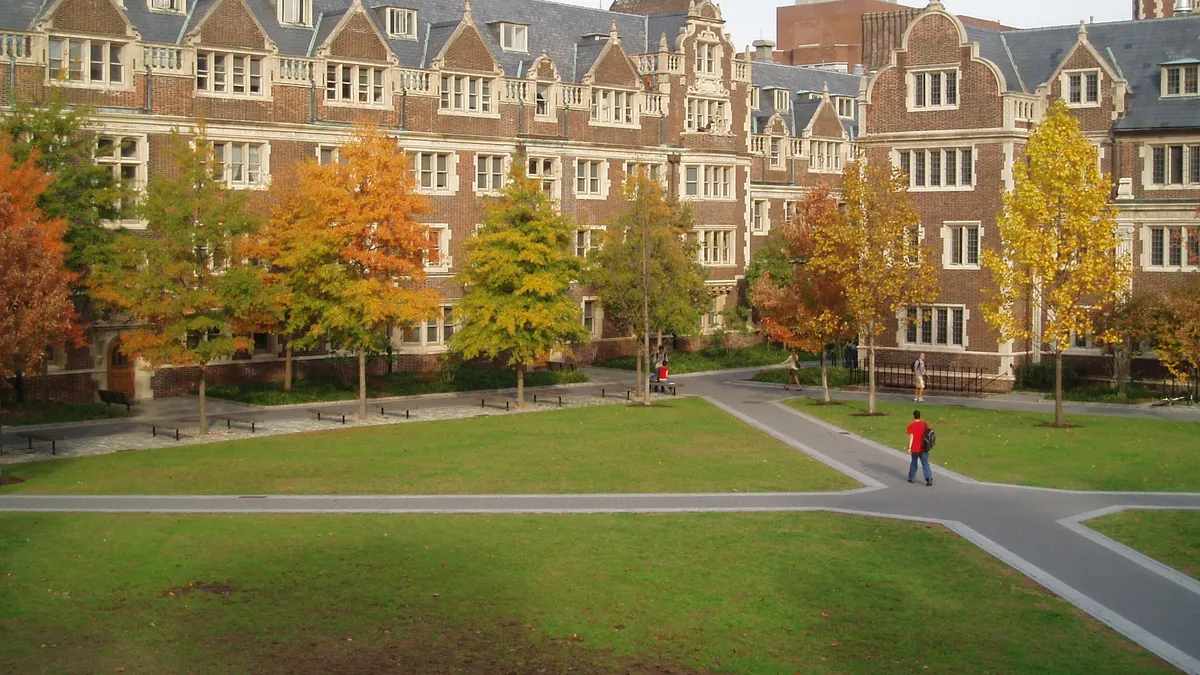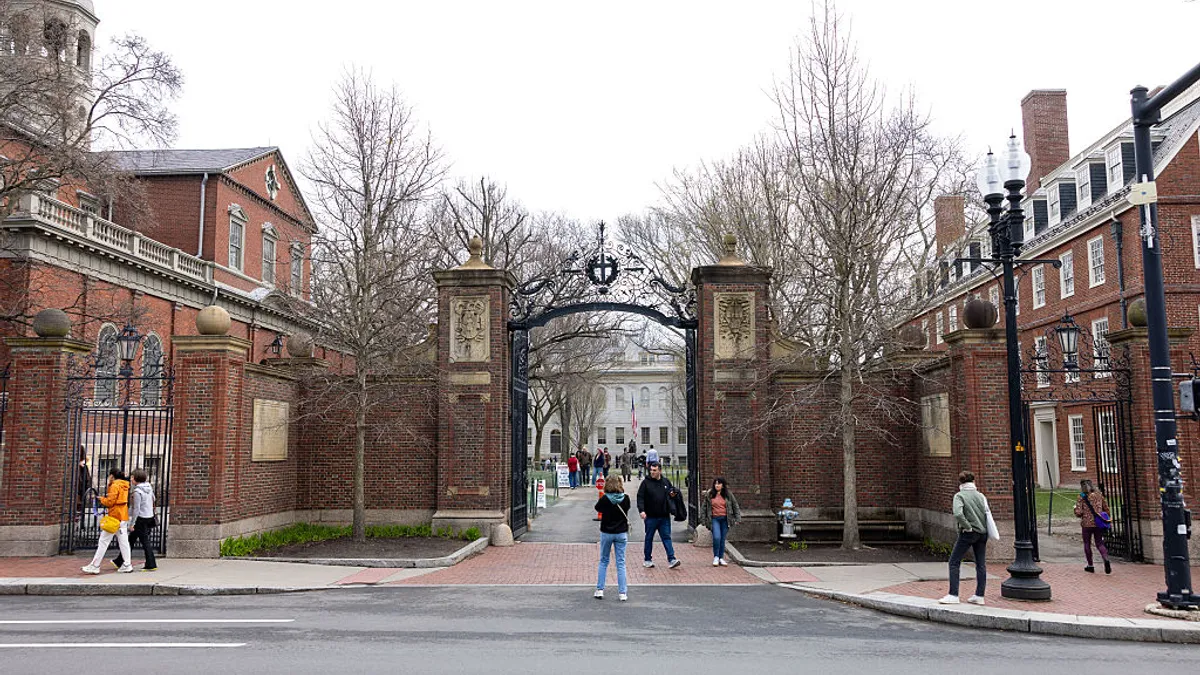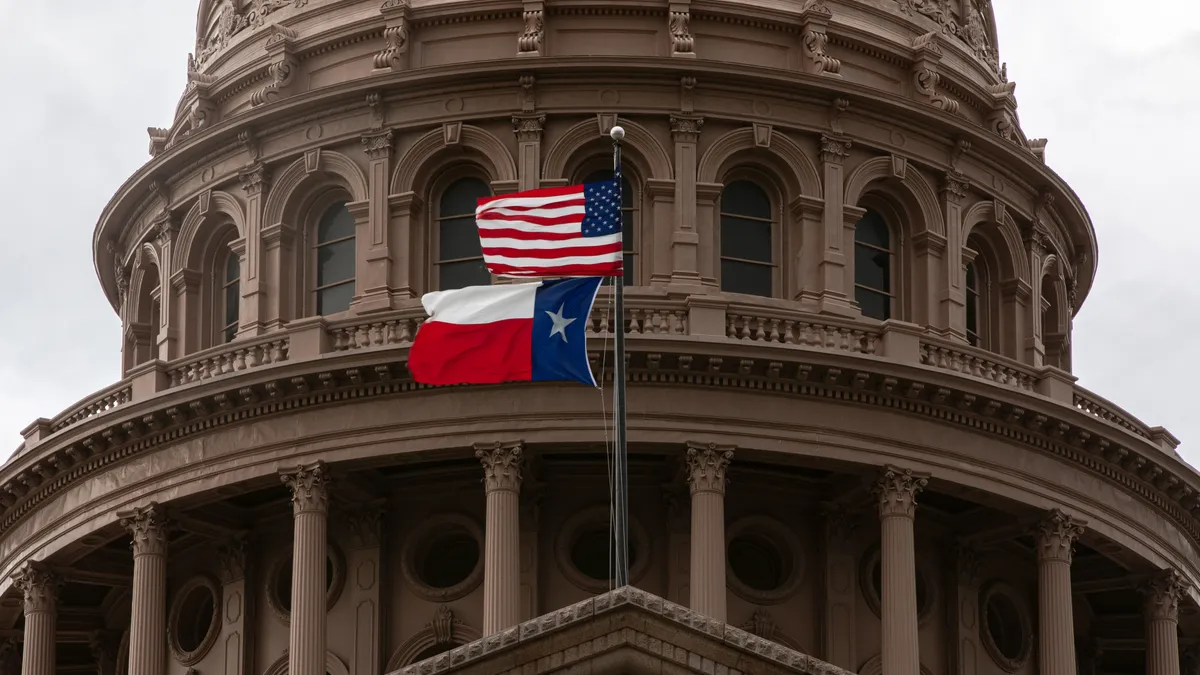The University of Pennsylvania wasn't necessarily looking to issue bonds this summer, much less bonds that would take 100 years to repay. But as its analysts watched the debt markets, they saw an opportunity that was too good to pass up.
Colleges and universities regularly secure funds to improve their facilities by issuing bonds that they'll have to repay, with interest, over several years. Usually, the longest they will take to repay the bonds is 30 years. Since the Great Recession, however, a dozen elite public and private universities, including Penn, have issued century bonds, which don't mature for 100 years.
That timeframe lets schools pay off massive investments over a lifetime or more, usually at a fixed, low interest rate. For the investors that buy them, such as insurance companies, century bonds are a chance to lock in guaranteed returns even in tough market conditions. But the opportunity to issue them doesn't come up often.
So far this year, the pieces have fallen into place for four universities: Penn, the University of Virginia, Rutgers and Georgetown. Together, they have issued more than $1.23 billion in 100-year financing.
Penn's finance team knew the university was interested in issuing debt sometime in the next year, said MaryFrances McCourt, vice president of finance and treasurer. The university had issued century bonds once before — $300 million in 2012 — to help upgrade its facilities to meet environmental goals. Several developments moved university officials to consider those bonds again.
The first major signal was that interest rates were low — really low. In July, interest rates for 30-year municipal bonds were lower only about 1% of the time, while rates on 30-year U.S. Treasury bonds were only lower about 2% of the time, according to McCourt's office. "It kind of takes you aback," she said.
The second factor was that lenders weren't paying a significant penalty for long-term bonds. Investors usually demand higher interest rates for longer-term investments. But when Penn analysts looked at the market, they found little difference in interest rates for shorter- and longer-term investments.
Other market indicators were also favorable: The interest rates Penn would have to pay on its bonds were lower than usual relative to U.S. Treasury bonds. And the interest rates for taxable bonds were not significantly higher than the rates on the tax-exempt municipal bonds that public and private universities typically depend on.
Plus, Penn's fiscal models showed that the century bonds would help, not hurt, its financial situation in an economic downturn. If cash ran short or if interest rates in the bond market spiked, having access to a low-interest pool of money could let the university meet its capital needs.
"You don't know what's going to happen tomorrow. All we knew was what was staring at us then," McCourt said. "We decided we've got to move quickly on this."
Century bonds gain traction
Only a handful of universities have issued century bonds this year, but their reemergence "has captured the imagination" of the higher education sector, said Ken Rodgers, an analyst for S&P Global Ratings.
The Walt Disney Co. issued the first modern-day corporate century bonds in 1993. On the higher ed front, Yale and Boston universities followed suit a few years later. But the next moves by colleges and universities to offer 100-year debt waited about two decades.
Why colleges entered the century bond market so much later is more likely due to interest rate trends than to universities' financial positions, Rodgers said.
The federal income tax cut law passed by Republicans in 2017 may have encouraged universities to use century bonds. The law effectively ended a popular way to take advantage of a falling interest rate environment — in which institutions could issue new bonds to pay off existing, higher-interest bonds — by eliminating the tax exemption for that practice.
Today, bankers and chief financial officers "are all talking about" century bonds with clients, even if they don't intend to use them, Rodgers said. "They want to be responsive to boards of trustees and the like, so they can explain what (century bonds) are and how universities have gone about issuing them."
"You don't know what's going to happen tomorrow. All we knew was what was staring at us then. We decided we've got to move quickly on this."

MaryFrances McCourt
Vice president of finance and treasurer, University of Pennsylvania
Century bonds offer a few advantages over the types of bonds that colleges usually issue, particularly municipal bonds.
For one, century bonds do not have the same federal restrictions as municipal bonds, because, unlike municipal bonds, the income investors get from century bonds is not tax-exempt. That means universities can use the money raised from century bonds to fund both public and private projects (such as food courts or corporate-funded research labs), not just those solely used for public purposes. As a result, century bonds can draw a wider range of investors.
Municipal bonds come with lower interest rates than century bonds because the investors who buy them can take advantage of the tax break. But investors that don't need exemptions from U.S. income taxes and, therefore, aren't likely to buy municipal bonds — such as foreign investors or nonprofit agencies — could take advantage of the century bonds instead.
'A more limited pool'
Relatively few institutions can realistically issue century bonds, however. The best candidates have sterling credit ratings, are well-positioned in the market and have been around for at least a century already, said Dennis Gephardt, a higher ed analyst for Moody's Investors Service.
"There are universities that a reasonable person might wonder whether they'll be around in 100 years from now. Those would not be good candidates for this," he said. "But the ones that (would be) have a record of many generations of being good stewards of the resources they've been given, have large endowments, have attractive student markets, have diverse revenue sources and have good planning discipline. That starts to get to be a more limited pool."
With such a long potential commitment, investors and credit rating agencies are especially thorough in evaluating a university's finances and policies before the bonds go on sale. That could include making sure there are protections for how the bond proceeds would be used. They also look over related entities, such as university-owned hospitals, for potential financial problems. They want to make sure the bond money will go toward its intended uses and not prop up a university's operating budget.
Even with all the scrutiny, century bonds give universities a low-interest option they can depend on for decades to come, including during periods when it would otherwise be tough to borrow money on the bond market.
Top five universities based on total century bond par, 1996-present
| Institution | Total century bond par (in thousands) |
| Massachusetts Institute of Technology | $1,800,000 |
| University of California System | $1,360,000 |
| University of Pennsylvania | $600,000 |
| California Institute of Technology | $500,000 |
| Ohio State University | $500,000 |
Source: S&P Global Ratings; media reports.
How colleges use them
Georgetown CFO David Green said the 100-year bonds are part of the school's strategy to refinance existing debt and keep up its 230-year-old campus. It issued $304 million of century bonds in January at an interest rate of 5.2%.
"By issuing century bonds, we can lock in rates, hedge against inflation and tap into a flexible and stable source of capital over a long period of time as we maintain our physical infrastructure and invest in the future of our university," he said.
Rutgers University is using proceeds from the $330 million of century bonds it issued in September, at a rate of 3.92%, to help finance an internal bank. The public university will be able to finance projects cheaply through the bank and pay back the loans over a few decades. Once those loans are repaid, the internal bank can finance more projects.
"By locking in this long-term financing, the university will be able to recycle funding for capital projects several times over the course of the next hundred years," said Adam Day, the university's assistant treasurer.
Penn's team initially considered issuing just $200 million in century bonds, but after seeing how interested investors were, they opted to offer $300 million instead. They sold the bonds in August at a rate of 3.61%, which at the time was the lowest rate ever on a U.S. century bond. (In September, the University of Virginia sold $350 million in century bonds at an even lower rate of 3.23%.)
McCourt said market conditions ultimately convinced her team to make the move.
"We didn't walk in intending to (use century bonds)," she said, "but it was something we couldn't ignore because it was too attractive."
Century bonds issued by colleges and universities, 1996-present
| Institution | Year issued | Par value (in thousands) |
|---|---|---|
| California Institute of Technology | 2011 | $350,000 |
| California Institute of Technology | 2016 | $150,000 |
| Boston University | 1997 | $100,000 |
| Bowdoin College | 2012 | $128,500 |
| Georgetown University | 2019 | $304,000 |
| Hamilton College | 2013 | $103,000 |
| Massachusetts Institute of Technology | 2011 | $750,000 |
| Massachusetts Institute of Technology | 2014 | $550,000 |
| Massachusetts Institute of Technology | 2016 | $500,000 |
| Ohio State University | 2011 | $500,000 |
| Ohio University | 2014 | $250,000 |
| Rutgers University | 2019 | $330,000 |
| Tufts University | 2012 | $250,000 |
| University of California System | 2012 | $860,000 |
| University of California System | 2015 | $500,000 |
| University of Pennsylvania | 2012 | $300,000 |
| University of Pennsylvania | 2019 | $300,000 |
| University of Southern California | 2011 | $300,000 |
| University of Virginia | 2019 | $300,000 |
| Wesleyan University | 2016 | $250,000 |
| Yale University | 1996 | $125,000 |
Source: S&P Global Ratings; media reports.




















